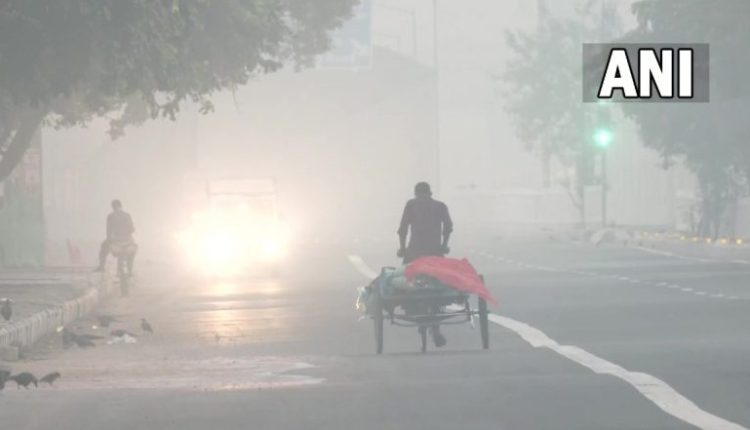Air Pollution in Bihar: Six Cities in State Among Most Polluted Top 10 in India; Eye-Burning, Breathing Problems, Health Issues on Rise
Patna, December 2: People in Bihar’s several districts these days have been at the receiving end due to low temperature and high air pollution, triggering serious health problems.
They have been forced to stay indoors as the complaints of eye-burning, and breathing problems are becoming common health issues. In the past fortnight, three to five cities of Bihar have regularly been coming on the top in terms of worst Air Quality Index in the country. Air Pollution in India: Mere 50% of Funds Released Under National Clean Air Programme Utilised.
Bihar’s six cities including Arrah, Motihari, Bettiah are among most polluted top 10 with Arrah having AQI of 404 and Motihari logging 400-mark on Friday at 12 noon. The AQI of Bettiah (4th) is 356 while Mullanpur (5th) (Punjab)- 336, UP’s Meerut (6th) -332, Naugachia (7th) -320, Bihar Sharif (8th) -309, Chapra -307, Delhi’s Pitampura (9th) -296 and Haryana’s Jind (10) 293.
An AQI from 0 to 100 is considered as good, 100 to 200 moderate, 200 to 300 ‘poor’, 301 to 400 ‘very poor’, and 401 to 500 ‘severe’. The AQI in several districts of Bihar started worsening in the first week of November this year. Surprisingly, there are no industries in these districts which could be blamed for it. Even the officials of the pollution departments are clueless about how to deal with it. Delhi Air Pollution: Air Quality in National Capital Remains Under ‘Very Poor’ Category, Overall AQI Stands at 303.
Ravi Sinha, a USA-based environmentalist and a native of Motihari told IANS: “My own district Motihari has been featuring in the worst category for the past one month despite no industrial activities. Sugar mills were closed decades ago. I read the geogenic and geographical factors and found that the regular flood leaving behind silt and alluvial soil led to higher levels of Particulate Meter (PM) 2.5 and 10 in the lower atmosphere.”
“In the past, we have seen clear blue sky and the peaks of Himalaya from my village located on the Indo-Nepal border. Now, it has turned into a gas chamber with people having health issues and low visibility,” Sinha said.
The cities like Arrah, Motihari or Bettiah do not have traffic volumes like metro cities, still the air pollution in these areas has reached alarming levels.
The experts believe that unsystematic development of cities, road constructions, building constructions, transportation of sand and clay are the main reasons for air quality deterioration in urban cities of the state.
“We have been seeing rampant constructions of roads and buildings in these cities. They are breaching basic norms of neither sprinkling water on roads nor covering the construction areas leading to fine particles amalgamating with drops of dew and forming smog,” Rajesh Tiwari, another environmentalist and a resident of Patliputra colony Patna, said.
“The roads of Bihar are not as higher as other metro cities. As a result, the movement of traffic is slow here. We all know that slow movement of vehicles generates more toxic gases. We are observing a mixture of gasses, dust and dew in the atmosphere and it is remaining at a height of not more than 150 feet. It is also a wedding season where crackers burst, also responsible for worsening air quality. If law enforcement agencies would not take preventive measures, the AQI of these cities will soon jump over 450 marks,” Tiwari said.
The PM 2.5 level at Patna’s Rajbansi Nagar was recorded 242 per cubic meter, while PM 10 was 150, at 12 noon Friday.
According to an official of Bihar State Pollution Control Board (BSPCB), the PM 2.5 level is in a very unhealthy zone and PM 10 is also in an unhealthy zone. Due to the high level of PM 2.5 and PM 10 in the air, complaint of eye-burning is common among people of Patna. The situation is extremely dangerous for the asthmatic patients.
Ashok Kumar Ghosh, the chairman of Bihar State Pollution Control Board (BSPCB), said, “We have taken some initiatives including sprinkling water on roads apart from removal of dust. Besides, we have also imposed a ban on open construction of buildings.”
“As the temperature of the city is also dipping, many people used to burn wood and other materials to keep themselves warm at night. We have also been monitoring them on roads and trying to prevent them. Separate BSPCB teams are also deployed to keep an eye on burning solid waste and leaves,” he said.
(The above story first appeared on Today News 24 on Dec 02, 2022 05:29 PM IST. For more news and updates on politics, world, sports, entertainment and lifestyle, log on to our website todaynews24.top).


